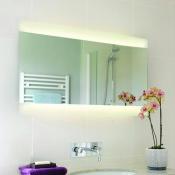Search
Login
Recommended
Furniture varnishes and their types
Varnish is a film-forming substance for the protective coating of various surfaces. The assortment of varnishes is great, we will talk about some in this article.
Content
- Oil varnishes
- Acrylic Varnishes video
- Cold cured varnishes
- Two-component polyurethane varnishes
- Alkyd varnishes
- Bitumen varnish video
Oil varnishes
If we mix natural linseed oil varieties diluted with turpentine, with hardened wood resin, we get a classic oil varnish.
-
Modern manufacturers, to reduce the cost of production in the production of oil varnishes, replace natural resins with synthetic resins (phenolic, alkyd, polyurethane); white spirit is used as a solvent.
-
Oil varnishes dry as a result of oxidation, after evaporation of the solvent, the varnish chemically changes in such a way that even white spirit does not soften the dried film.
The property of varnish changes due to changes in the ratio of oil to resin.
Greasy oil varnishes having a high oil content are used for outdoor applications, due to the fact that they are relatively durable, flexible and waterproof.
For internal work, skinny oil varnishes (sanded) are used. Since these varnishes have more resin and less oil than greasy varnishes, they dry faster, form a harder film and can be sanded to a high gloss.
The quality of the resin also affects the characteristics of the varnish.
For external use, varnishes are often made from alkyd resins, to ensure elasticity and weather resistance, alkyd resins are mixed with tung oil.
Some companies emphasize the property of varnish, reflecting it in the name.
For example, phenolic oil varnish is called ship, yacht or varnish for marine structures.
To cover the floor, the varnish must be strong enough to withstand shock and resist abrasion. Therefore, in the manufacture of floor varnishes, polyurethane resins are used.
On sale, usually, oil varnishes are sold ready-to-use.
The exception is coloring or matting additives, which must first be mixed in varnish.
Oil-based varnishes are suitable for most indoor surfaces.
Acrylic Varnishes
When dissolving acrylic resin in water in the form of an emulsion, an acrylic lacquer is obtained; during operation, the lacquer has a milky white color, but after drying it becomes transparent.
Acrylic varnish includes several solvents, which are called coagulating agents, after the evaporation of water, they turn the resin particles into a cured film.
You need to know that the curing process can take place only in relatively warm and dry conditions.
Therefore, it must be borne in mind that with high humidity and dampness, a varnish film may not form.
Acrylic varnish dries so quickly that all work with it can be finished in one day.
The great advantage of acrylic varnish is non-toxicity and lack of smell.
After working with varnish, brushes can be washed in plain tap water.
Cold cured varnishes
There are varnishes on sale that solidify as a result of a process called cross-polymerization; they need an acid catalyst to start the reaction and are called cold cured varnishes.
Such varnishes form a very strong, irreversible film, because after curing the resin, the molecules become chemically bonded.
The film of this varnish is very resistant to solvents, heat and abrasion.
Such varnish can be applied with a relatively thick layer, since the setting of cold cured varnishes does not depend on the evaporation of the solvent or on oxidation.
Two types of varnishes are on sale.
-
Some varnishes on sale come already treated with a catalyst, as a result, curing begins automatically, immediately after evaporation of the solvent.
-
Other varnishes are sold as two components, so before use, an acid hardener must be added to the varnish.
The production of cold cured varnish, usually based on the use of bottled urea-formaldehyde resins, melamine is added for heat resistance, alkyd resins are used as a plasticizer.
Such a varnish forms a very transparent film, while it does not turn yellow with time.
There are also opaque white and black varnishes.
Two-component polyurethane varnishes
The name itself is two-component, indicating that the varnish contains two components.
Before using such a varnish, for its curing, it is necessary to add a precisely measured amount of isocyanate hardener.
When using this varnish, you get a transparent, durable film.
In terms of wear resistance, it is better than standard oil varnish, but it can be a health hazard.
In many developed countries, the use of two-component polyurethane varnishes is prohibited.
Only at strictly controlled industrial enterprises where high-quality exhaust ventilation is installed, the use of this varnish is allowed.
Alkyd varnishes
Alkyd varnishes are based on synthetic alkyd resins.
Such varnishes have good adhesion to various materials, high moisture resistance.
Suitable for indoor and outdoor use.
Often confused with oil varnish, but this, fundamentally, is not true, in terms of chemical properties, these varnishes differ from oil varnishes, and in terms of quality characteristics they significantly exceed them.
Bitumen varnish
Bitumen varnish is a ready-to-use solution based on bitumen.
It is widely used for processing concrete products, metal and other building structures.
It is widely used in construction for waterproofing, protection of various metal structures from corrosion.
Using bitumen varnish in working with wood, thereby protecting it from fungal infections.
In addition, bitumen varnish is a primer for painting, it is a reliable adhesive, good black paint.





